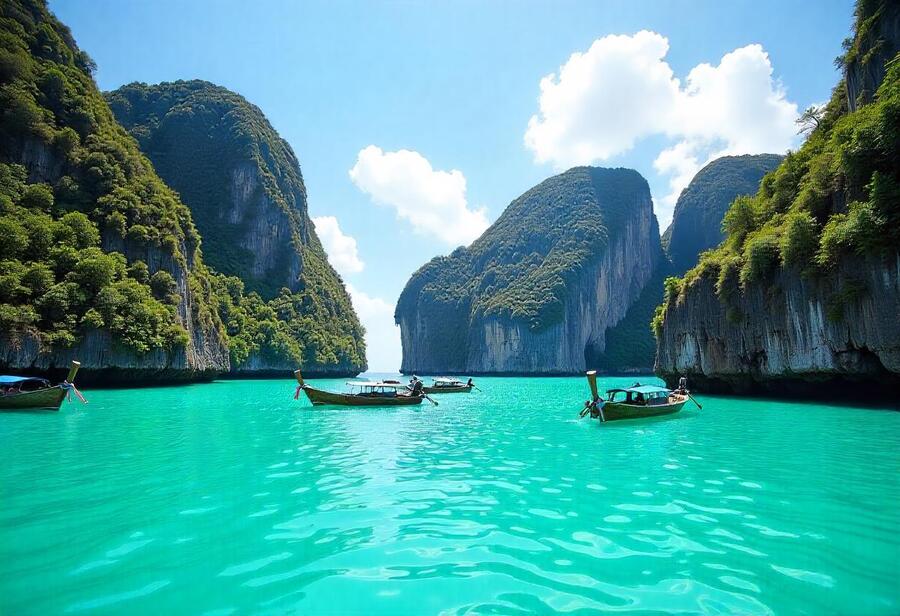Saturday, July 5, 2025
The Philippines, South Korea, Japan, China, Australia, Thailand, and Vietnam are driving a seismic shift in the global tourism landscape as they roll out groundbreaking strategies to attract millions of international travelers. From aggressive digital campaigns and visa-free travel initiatives to massive infrastructure upgrades and unique cultural experiences, these nations are redefining how the world explores Asia. This bold approach is not only fueling intense regional competition but also positioning them as global tourism powerhouses ready to capture the surging demand for post-pandemic travel.
The Philippines recorded 2.54 million international tourist arrivals in the first five months of this year, marking a modest 1.2% drop compared to the same timeframe in 2024. This slight decline highlights how the country is struggling to keep pace with its regional neighbors, many of which are experiencing a strong rebound in tourism.
South Korea remained the top source of visitors for the Philippines, contributing 552,925 arrivals despite a steep 19% drop from last year. This sharp decline follows a series of tragic incidents involving South Korean tourists in the country, sparking heightened concerns over safety. These incidents have fueled negative perceptions that may have deterred many potential travelers from choosing the Philippines as their vacation destination.
The United States emerged as the second-largest contributor to the Philippines’ tourism sector, sending 442,756 visitors. Unlike South Korea, arrivals from the U.S. grew by a healthy 9.67%, showing positive momentum and underlining the market’s potential for further expansion. Japan, China, and Australia rounded out the top five source markets, reaffirming their importance to the country’s inbound tourism strategy.
Despite these figures, the Philippines lags significantly behind its Southeast Asian counterparts. Thailand attracted a remarkable 14.3 million international visitors from January to May, firmly establishing itself as a dominant force in regional tourism. Vietnam saw 9.2 million international visitors in the same period, while Singapore recorded over 7 million arrivals. Even Indonesia, often considered a slower tourism market, surpassed the Philippines with 5.63 million foreign visitors.
These comparisons emphasize the challenges facing the Philippine tourism industry as it works to regain momentum in the highly competitive regional travel landscape.
The Philippines, with over 36,000 kilometers of breathtaking coastline and countless pristine islands, holds immense potential as a world-class tourism destination. The nation earned the coveted title of Asia’s Leading Beach Destination at the 2024 World Travel Awards, reaffirming its global acclaim for stunning coastlines and pristine shores. This recognition highlights the beauty and diversity of its beaches, from the powdery white sands of Boracay to the dramatic limestone cliffs of Palawan.
However, experts believe that accolades alone are not enough to drive growth. Concerns about infrastructure, safety, and marketing strategies continue to affect the country’s ability to attract larger numbers of tourists. Many travelers today seek not only natural beauty but also seamless travel experiences, efficient transportation networks, and high safety standards—areas where the Philippines must intensify efforts to compete effectively.
The Philippines aims to attract 8.4 million international tourists in 2025, setting an ambitious goal to accelerate its tourism recovery. Achieving this goal would require a remarkable 55% increase over the 5.4 million visitors recorded last year. To reach this ambitious target, tourism authorities are ramping up campaigns to showcase the country’s unique attractions, cultural heritage, and hospitality. Initiatives to improve infrastructure, such as upgrading airports and developing more sustainable tourism practices, are also underway.
Industry stakeholders argue that the Philippines needs to diversify its tourism offerings beyond beaches to include adventure tourism, eco-tourism, culinary experiences, and cultural immersion. This diversification can help attract new markets and keep visitors engaged for longer stays.
Meanwhile, competing destinations like Thailand and Vietnam have been aggressively promoting their tourism sectors through digital marketing campaigns, visa facilitation programs, and infrastructure investments. These efforts have enabled them to attract millions of tourists, even as global travel trends shift rapidly.
The Philippines stands at a critical crossroads. With its natural beauty, rich culture, and warm hospitality, it has all the ingredients to become a global tourism powerhouse. However, without strategic interventions and a stronger emphasis on visitor safety and infrastructure, the country risks being left further behind in the race for international tourists.
The Philippines, South Korea, Japan, China, Australia, Thailand, and Vietnam are reshaping global tourism by launching innovative strategies such as digital campaigns, visa reforms, and world-class infrastructure upgrades to attract millions of travelers and dominate the future of international travel.
As the world’s appetite for travel continues to grow, the Philippines must seize the moment to strengthen its position in the regional and global tourism markets. The next few years will prove pivotal in determining whether the country can translate its potential into sustained success.
«Enjoyed this post? Never miss out on future posts by following us»
